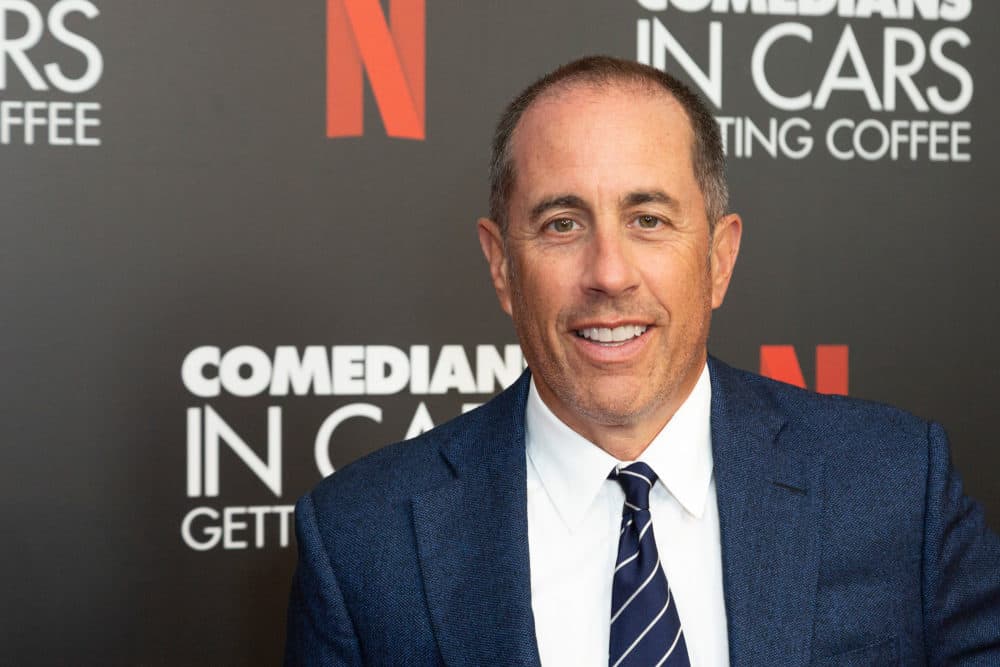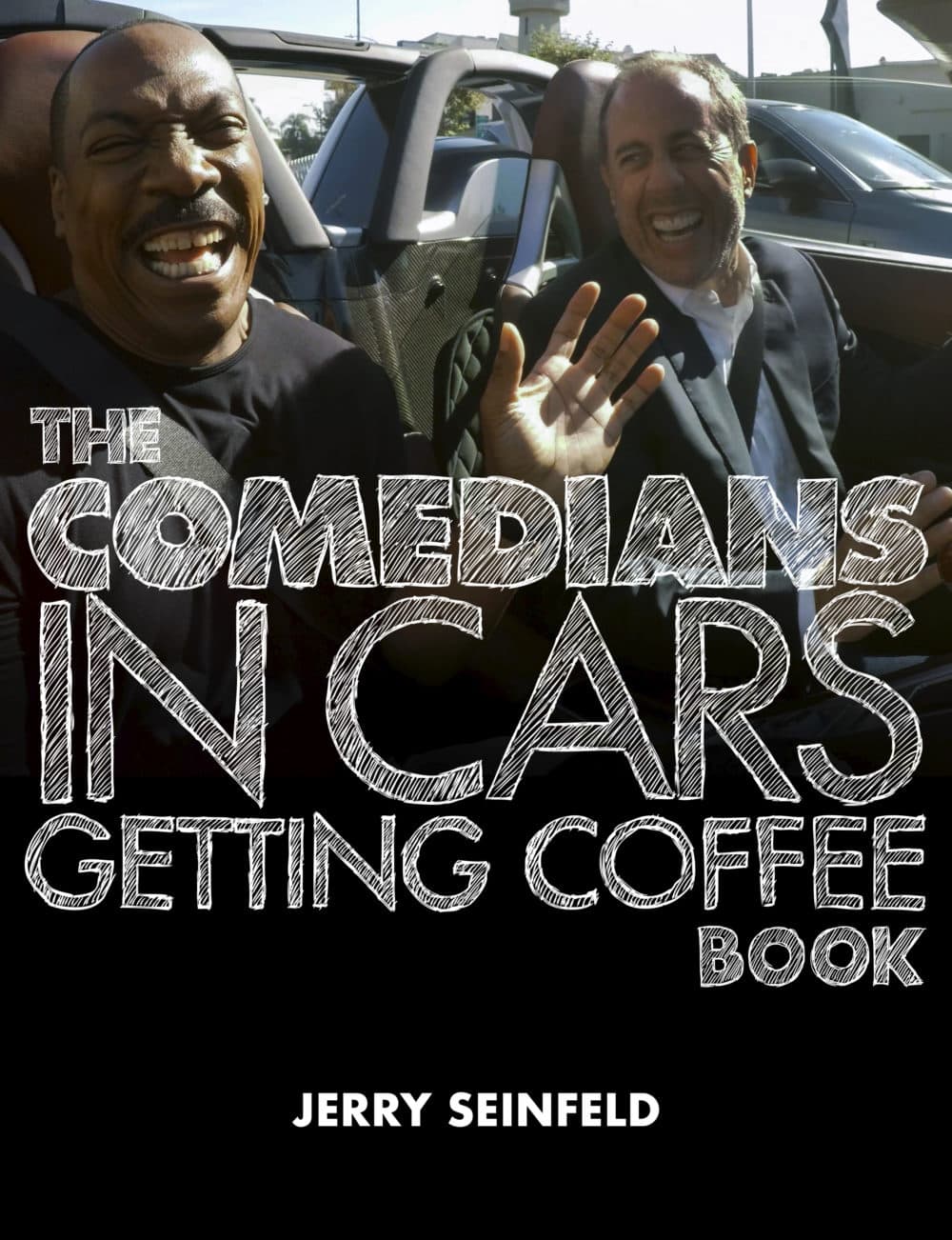Advertisement
Jerry Seinfeld celebrates 10 years of lattes and laughs in 'Comedians in Cars Getting Coffee' book'

It’s been 10 years since Jerry Seinfeld first called up a fellow comedian and invited them for a cup of coffee in the car.
To celebrate the show’s anniversary, his new "The Comedians in Cars Getting Coffee Book" features transcripts and hilarious, intimate conversations.
“Seinfeld” fans will remember the episode where Kramer debuted his coffee table book on “Live with Regis and Kathie Lee” — which deterred Seinfeld from going with the title "The Comedians in Cars Getting Coffee Table Book."
“I think we did that joke already,” Seinfeld says.

In the book’s introduction, Seinfeld writes that he almost feels like he should apologize for the indulgent idea behind the show. After years of watching late-night shows and waiting for the comedian to come on, he imagined a show where the audience doesn’t interrupt the subtle or personal moments.
“You cannot put a comedian in front of an audience and ask them to not service that audience,” he says. “They won't do it.”
Seinfeld compares comedians to inanimate objects or aliens from an extraterrestrial world. Unedited footage of comedians in conversations shows how they move faster through subjects than other people, he says.
“That's what a standup set is. It's a condensed, hyperkinetic, fake conversation. Nobody talks in a series of jokes. It's a ridiculous conceit that happens to be a lot of fun, but it takes a tremendous amount of work to create it,” Seinfeld says. “But the comedian brain that can do that is not a typical brain.”
Some of the guests on the show are Seinfeld’s dear friends, while he had never met others like Amy Schumer or Steve Martin.
Advertisement
“The thing that I discovered doing the show is any comedian sits down with any other comedian and you feel like you grew up together,” Seinfeld says.
For a comedian, everything in life is superficial except comedy, he says. Seinfeld had to learn how to function in social settings and talk to people outside of the comedy world. Just ask his wife.
“The comedy's the only real thing to you, everything else you're just kind of trying to act normal so people don't realize how off you are,” he says. “I was at a dinner the other night with Steve Martin and Seth Meyers and John Mulaney and our wives. Somebody heard there's this new Chinese restaurant in town. ‘Oh, why don't we make a date? We can all go to this Chinese restaurant.’ And I think it was Seth Meyers’ wife said, ‘With these autistic men, we're going to go out?’”
For Seinfeld, meeting Carl Reiner and Mel Brooks was a “religious moment” comparable to meeting Moses.
“I love my contemporaries, but it was the older guys I love the most,” Seinfeld says. “People ask, what's it like to be on ‘The Tonight Show with Johnny Carson?’ I used to say it's like there's a doorknob on the front of your TV and you just opened it and stepped inside.”
Sometimes the conversations in the book read like therapy, like the one with “Seinfeld” co-star Michael Richards, who retired from standup after a video of a racist tirade against a heckler went viral in 2006. On the show, Richards says he made a mistake by concentrating on himself and his ego.
Seinfeld says he never considered ending his friendship with Richards over the controversy.
“I'm not minimizing what happened, but how could you not understand a mistake?” Seinfeld says. “Every comedian knows what it's like to be up there in that frying pan, and it's very easy to lose your equilibrium and make a terrible mistake. I've offered to have fistfights with audience members. I said, ‘Let's go outside right now and sort this out.’”
What Seinfeld remembers most from the conversation is Richards saying he wishes he enjoyed making the show more.
“And I said, ‘That wasn't our job to enjoy it. It was our job for them to enjoy it,’” Seinfeld says.
Like the hit show, Seinfeld says the book is a valentine. He wanted "The Comedians in Cars Getting Coffee Book" to show the quality of friendships among comedians, which start in elementary school where one class clown befriends another. Ever since then, when Seinfeld walks into a room and sees another comedian, he runs right over to them.
“Because when you suddenly find yourself in a group of people that have the same thing as you, you feel at home for the first time in your life. You've always felt, I don't belong here. And for the first time, you walk into a club and there's all these comedians standing at the bar and you feel like, ‘Oh, this is where I belong,’” he says. “That feeling is that's a life moment that gives your life. That gives you a life. I didn't know what I was here for. Now I know.”
Emiko Tamagawa produced and edited this interview for broadcast with Gabe Bullard. Allison Hagan adapted it for the web.
This segment aired on November 21, 2022.


